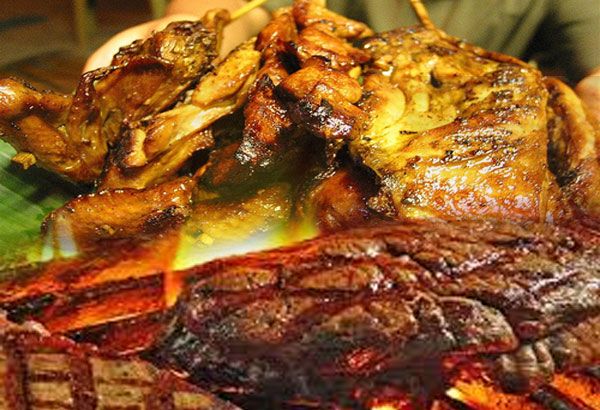Which restaurant in Metro Manila can replicate this Obama dinner?
Here are the specially-prepared Filipino dishes served on April 28, 2014 at the state dinner hosted by President Noynoy Aquino welcoming U.S. President Barack Obama to Manila City, the Philippines:

The philstar.com is source of the image above: Tenderloin inasal and pili-crusted lapu-lapu were on the menu at the Philippine state dinner for U.S. President Barack Obama and 300 guests at Malacanang Palace.
Here are the specially-prepared Filipino dishes served on April 28, 2014 at the state dinner hosted by President Noynoy Aquino welcoming U.S. President Barack Obama to Manila City, the Philippines:

The philstar.com is source of the image above: Tenderloin inasal and pili-crusted lapu-lapu were on the menu at the Philippine state dinner for U.S. President Barack Obama and 300 guests at Malacanang Palace.
This menu offers Filipino food, with most of the ingredients using local items.
The dishes include:
- Lobster kilawin carpaccio, baby sprouts and fiddle fern with kalamansi jam (Kilawing ulang, pako at sarisaring talbos na may halayang kalamansi)
- Seafood stew with river prawns, scallops and smoked mussels, sweet banana in rich tomato and coriander sauce (Pocherong lamang dagat na may suahe, scallops at tinapang tahong)
- Red-dotted lapu-lapu with pili nut crust, pumpkin mash and local vegetables cooked in coconut milk (Lapu-lapu na may pili nut crust, nilupak na kalabasa at guinataang gulay)
- Annato lemongrass marinated in US prime rib, pumpkin mash and Batangas farmed vegetables (US prime rib inasal, nilupak na kalabasa at samu't saring gulay mula sa Batangas)
- Coconut lychee ice cream served with mango macapuno strudel (Buko lychee sorbetes na may mangga't macapunong napoleones)
- Coffee or tea






